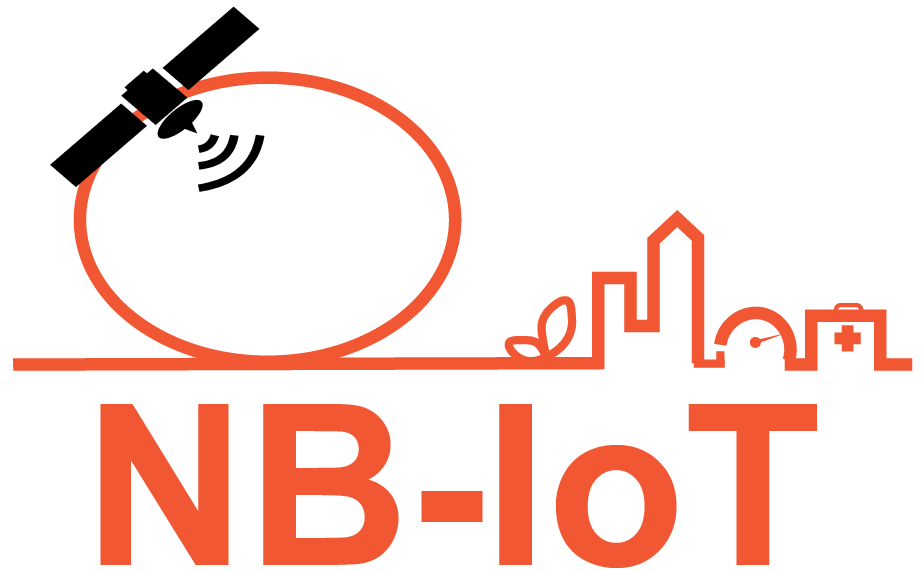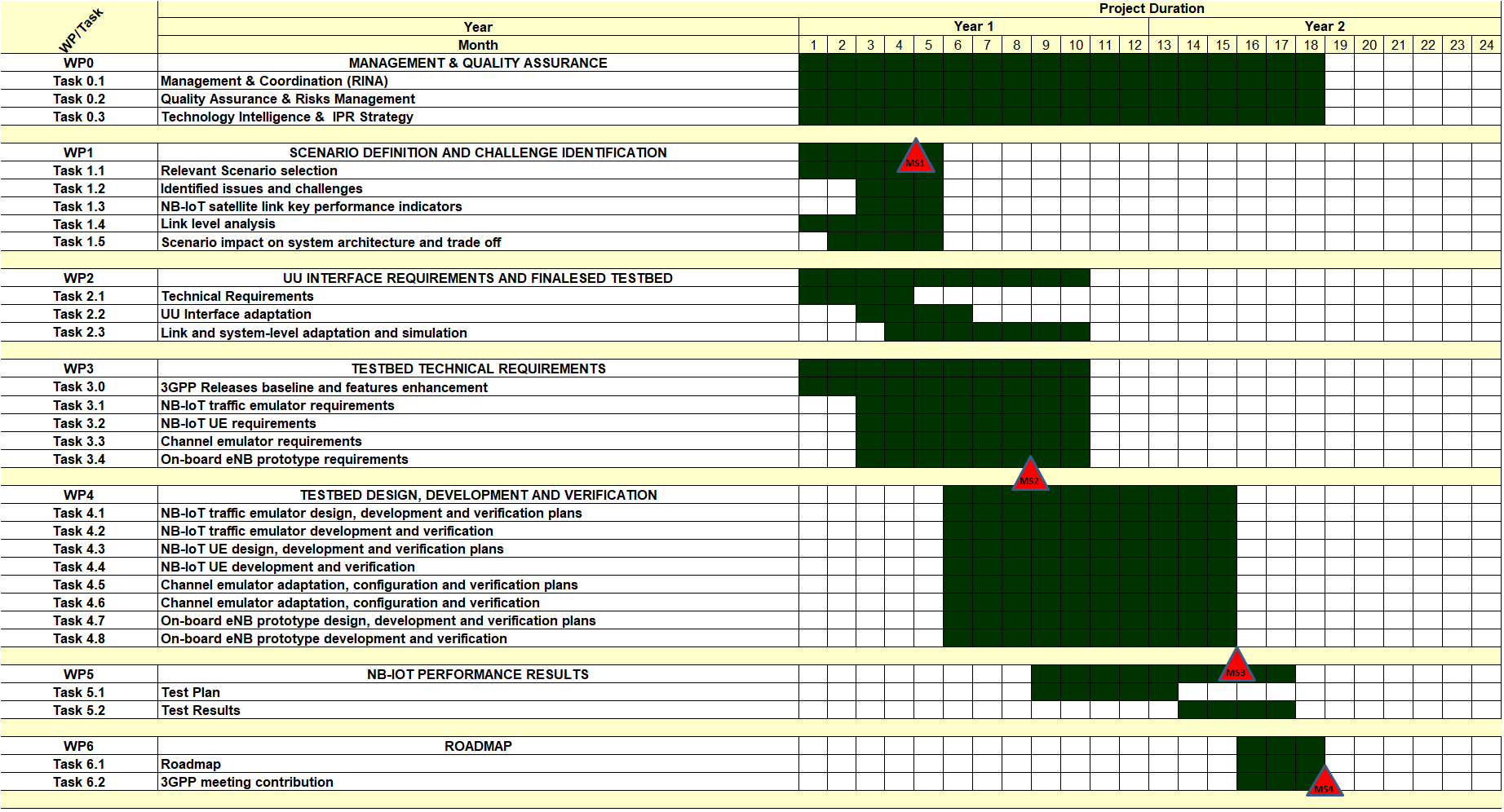
-
StatusOngoing
-
Status date2021-03-10
-
Activity Code3A.106
Preliminary analysis have shown that the NB-IoT standard can be used by satellite systems in non-geostationary orbits under certain constraints. However, to enable the integration of user sensors employing this technology, it is necessary to develop an on-board evolved node B (eNB) capable of using a standard not originally conceived for satellite communications with adaptation and additional features dictated by the scenarios. Moreover, the eNB is preferably compatible with small satellites platforms in terms of mass, power and volume since these platforms are usually the ones selected to provide M2M/IoT services. Finally, it is also important to develop and propose UU (radio interface between UE and eNB) adaptations that would allow maximizing the efficiency of a satellite system.
The goal of the project is the development of a demonstrator in which communication between an NB-IoT User Equipment (UE) and an eNB adapted for satellite communications is functionally verified.
The state-of-the-art technology for NB-IoT is critically revised, referring to integration with satellite systems and associated technical requirements expected by the demonstrator.
The project aims at developing a demonstrator where the communication between a NB-IoT UE and the adapted eNB is functionally verified. The main challenges are:
- identification of the scenarios suitable for NB-IoT via NTN and what are their impacts in terms of key architectural strategies;
- identification of adaptations needed to enable the operation of satellite links for NB-IoT for both Access Stratum (AS) and Non-Access Stratum (NAS);
- development of a satellite RAN, including a User Equipment (UE), an RF and baseband processing unit and an eNB;
- Functional and performance verification of the NB-IoT protocol over satellite.
Development and validation of the adaptations to the UU’s protocol stack (e.g., PHY, MAC, RLC, PDPC, and RRC layers) to make the NB-IoT radio standard viable over satellite.
Development of an on board eNB capable of supporting the adapted 3GPP NB-IoT standard within the mass, power and volume constraints of a small platform (<12U). The demonstrator is capable of emulating different scenarios as well as the main limiting factors in the telecommunications channel, with reference to Doppler shift/rate, mobility, possible shadowing/multipath, in order to assess performance under realistic conditions.
The project features include:
- exploitation of experiences and knowledge from the other ESA project “5G4Space” (https://artes.esa.int/projects/5g4space);
- monitoring of the latest 3GPP specifications, the latest 3GPP Technical Reports, and Technical documents, considering not only adaptation at PHY/MAC level, but also at RRC layer and NAS layer for control plane if required;
- identification of the widest set of possible scenarios;
- identification of the UU Interface technical requirements and adaptation based on scenario selection;
- implementation of the required adaptation by system level simulation and experimental test;
- testbed requirements, design and development, more specifically for the adapted NB-IoT and on-Board eNB;
- test plan and execution to verify the efficacy of the proposed adaptation.
An high level and preliminary architecture is shown in the following picture:

The main sub-systems are:
- NB-IoT Traffic Emulator: to emulate the traffic generated by several UEs.
- NB-IoT Adapted UE: a NB-IoT module with UU interface adaptations.
- Channel Emulator: to emulate all the impairments caused by LEO satellites. In particular, is able to introduce variable delay, variable Doppler Shift, Phase Noise, Fading.
- OnBoard eNB Prototype: an eNB module with the UU interface adaptations.
The main planning of the general tasks is reported below:

With the following relevant milestones:
- MS1: Preliminary Operation Scenario Requirements and acceptance of all related deliverables. Foreseen by July 2020
- MS2: Technical Requirements (traffic emulator, NB-IoT UE, Channel Emulator, On-board eNodeB Prototype) and acceptance of all related deliverables. Foreseen by December 2020
- MS3: Testbed Implementation and acceptance of all related deliverables. Foreseen by July 2021
- MS4: Results, Roadmap and acceptance of all related deliverables. Foreseen by October 2021
The activities have been started on April 1st 2020.
The milestone MS1 has been achieved with the completion of the WP1, where feasible scenarios have been analysed, challenges have been identified, and trade-off choices have been indicated, in order to select plausible and consistent applications of NB-IoT in a satellite context adapted to CubeSat platforms. Currently, the Team is concluding the activities in WP2 and WP3 (i.e., milestone MS2), in order to fully define the necessary UU interface modifications and the testbed requirements. Finally, the Team is starting the WP4 activities, devoted to the design and the implementation of the NB-IoT testbed.





